- Home
- Paul Christopher
Michelangelo's Notebook Page 2
Michelangelo's Notebook Read online
Page 2
Banish the demon to the infernal depths,
and stay closer, dear Mother,
to your aged and erring child.
With a gentle touch,
cover the wary pupils
and kindly consign to God
the soul that is returning to him.
Amen.”
The wind grew louder as it swept through the trees, answering her, and for a single moment of peace, the faith of her childhood returned and she felt the joy of God once more. Then it faded with the rolling gust and the tears flowed down her cheeks unchecked. She thought of Bertoglio, of Filomena and the child. She thought of Katherine, and she thought of the man, the arrogant unholy man who had done this to Katherine and brought her to this end. No prayer of popes for him, only a curse she’d once heard her mother speak so many years ago.
“May you rot in your tomb, may you burst with maggots as you lie dead, may your soul rot into corruption before the eyes of your family and the world. May you be damned for all dark eternity and find no grace except in the cold fires of hell.”
1
Her hair was the color of copper, polished and shining, hanging straight from the top of her head for the first few inches before turning into a mass of wild natural curls that flowed down around her pale shoulders, long enough to partially cover her breasts. The breasts themselves were perfectly shaped and not too large, round and smooth-skinned with only a small scattering of freckles on the upper surface of each mound, the nipples a pale translucent shade of pink usually seen only on the hidden inner surfaces of some exotic sea-shells. Her arms were long and stronger-looking than you might expect from a woman who was barely five foot six. Her hands were delicate, the fingers thin as a child’s, the nails neatly clipped and short.
Her rib cage was high and arched beneath the breasts, the stomach flat, pierced by a teardrop-shaped navel above her pubis. The hair delicately covering her there was an even brighter shade of hot copper, and in the way of most redheaded women, it grew in a naturally trimmed and finely shaped wedge that only just sheltered the soft secret flesh between her thighs.
Her back was smooth, sweeping down from the long neck that was hidden beneath the flowing hair. At the base of her spine there was a single, pale red dime-sized birthmark in the shape of a horn, resting just above the cleft of the small, muscular buttocks. Her legs were long, the calves strong, her well-shaped ankles turning down into a pair of small, high-arched and delicate feet.
The face framed by the cascading copper hair was almost as perfect as the body. The forehead was broad and clear, the cheekbones high, the mouth full without any artificial puffiness, the chin curving a little widely to give a trace of strength to the overall sense of innocence that seemed to radiate from her. Her nose was a little too long and narrow for true classical beauty, topped by a sprinkling of a dozen freckles across the bridge. The eyes were stunning: large and almost frighteningly intelligent, a deep jade green.
“All right, time’s up, ladies and gentlemen.” Dennis, the life drawing instructor at the New York Studio School, clapped his hands sharply and smiled up at the slightly raised posing dais. “Thanks, Finn, that’s it for today.” He smiled at her pleasantly and she smiled back. The dozen others in the studio put down an assortment of drawing instruments on the ledges of their easels and the room began to fill with chatter.
The young woman bent down to retrieve the old black-and-white flowered kimono she always brought to her sessions. She slipped it on, knotted the belt around her narrow waist then stepped down off the little platform and ducked behind the high Chinese screen standing at the far side of the room. Her name was Fiona Katherine Ryan, called Finn by her friends. She was twenty-four years old. She’d lived most of her life in Columbus, Ohio, but she’d been going to school and working in New York for the past year and a half, and she was loving every minute of it.
Finn started taking her clothes off the folding chair behind the screen and changed quickly, tossing the kimono into her backpack. A few minutes later, dressed in her worn Levi’s, her favorite sneakers and a neon yellow T-shirt to warn the drivers as she headed through Midtown, she waved a general good-bye to the life drawing class, who waved a general good-bye back. She picked up a check from Dennis on her way out, and then she was in the bright noon sun, unchaining the old fat-tired Schwinn Lightweight delivery bike from its lamppost.
She dumped her backpack into the big tube steel basket with its Chiquita banana box insert, then pushed the chain and the lock into one of the side pockets of the pack. She gathered her hair into a frizzy ponytail, captured it with a black nylon scrunchie, then pulled a crushed, no-name green baseball cap out of the pack and slipped it onto her head, pulling the ponytail through the opening at the back. She stepped over the bike frame, grabbed the handlebars and pulled out onto Eighth Street. She rode two blocks, then turned onto Sixth Avenue, heading north.
2
The Parker-Hale Museum of Art was located on Fifth Avenue between Sixty-fourth and Sixty-fifth Streets, facing the Central Park Zoo. Originally designed as a mansion for Jonas Parker—who made his money in Old Mother’s Liver Tablets and died of an unidentified respiratory problem before he could take up residence—it was converted into a museum by his business partner, William Whitehead Hale. After seeing to the livers of the nation, both men had spent a great time in Europe indulging their passion for art. The result was the Parker-Hale, heavily endowed so that both men would be remembered for their art collection rather than as the inventors of Old Mother’s. The paintings were an eclectic mix from Braque and Constable to Goya and Monet.
Run as a trust, it had a board that was gold-plated, from the mayor and the police commissioner through to the secretary to the cardinal of New York. It wasn’t the largest museum in New York but it was definitely one of the most prestigious. For Finn to get a job interning in their prints and drawings department was an unquestionable coup. It was the kind of thing that got you a slightly better curatorial job at a museum than the next person in line with their master’s in art history. It was also a help in overcoming whatever stigma there was in having your first degree from someplace like Ohio State.
Not that she’d had any choice; her mom was on the Ohio State archaeology faculty so she had attended free of charge. On the other hand she wasn’t living in New York for free and she had to do anything and everything she could to supplement her meager college fund and her scholarship, which was why she worked as an artists’ model, did hand and foot modeling for catalogs whenever the agency called, taught English as a second language to an assortment of new immigrants and even babysat faculty kids, house-sat, plant- and pet-sat to boot. Sometimes it seemed as though the hectic pace of her life was never going to settle down into anything like normalcy.
Half an hour after leaving the life drawing class she pulled up in front of the Parker-Hale, chained her bike to another lamppost and ran up the steps to the immense doorway capped by a classical relief of a modestly draped reclining nude. Just before she pulled open the brass-bound door, Finn winked up at the relief, one nude model to another. She pulled off her hat, slipped off the scrunchie and shook her hair free, stuffing hat and scrunchie into her pack. She gave a smile to old Willie the gray-haired security guard, then went running up the wide, pink marble staircase, pausing on the landing to briefly stare at the Renoir there, Bathers in the Forest.
She drank in the rich graceful lines and the cool blue-greens of the forest scene that gave the painting its extraordinary, almost secretive atmosphere and wondered, not for the first time, if this had been one of Renoir’s recurring fantasies or dreams: to accidentally come upon a languorous, beautiful group of women in some out-of-the-way place. It was the kind of thing you could write an entire thesis about, but no matter what she thought about it, it was simply a beautiful painting.
Finn gave the painting a full five minutes, then turned and jogged up the second flight. She went through the small Braque gallery, then went down a short corridor to an unmarked door
and went inside. As in most galleries and museums, the paintings or artifacts were shown within an inset core of artificial rooms while the work of the museum actually took place behind those walls. The “hidden” area she had just entered contained the Parker-Hale’s prints and drawings department. P&D was really a single long room running along the north side of the building, the cramped curators’ offices getting the windows, the outer collections areas lit artificially with full-spectrum overheads.
The collections were held in a seemingly endless number of acid-free paper storage drawers ranged along the inner wall. In between the shoulder-high storage cabinets were niches fitted with a desk, chair and a large flat light table for examining individual items. The light tables were made of a sheet of opaque white glass lit from beneath and held in strong wooden frames. Each table was fitted with a photographer’s copy stand for taking inventory slides of each print or drawing, and every second niche contained a computer terminal with the entire inventory of the collection entered on its database, complete with a photographic image, documents relating to the acquisition of the object and a record of the works’ origins or provenance.
Finn’s job for the entire summer consisted of checking that the inventory number, slide number and provenance number all matched. Grunt work certainly, but the kind of thing a twenty-four-year-old wet-behind-the-ears junior curator would have to get used to. What was it her mother was always saying? “You’re a scientist dear, even if the science is art, and everything is grist to your mill.”
Grist to your mill. She grinned at that, picked up a stenographer’s notebook and a pencil from the stationery cupboard and went down the row of paper storage units to where she’d been working yesterday. After getting her degree, she’d spent a year in Florence, studying in Michelangelo’s birth-place, walking where he’d walked and learning the language as well. Now that was grist to her mill, even if it did involve getting her butt pinched black-and-blue by everyone from the guy in the archives office to the goofy old priest in the library at Santo Spirito.
She wouldn’t be mounting seminal shows of the works of Renaissance Florentine painters her first day on the job. Besides, she’d been promised that if she did well as an intern she’d be given a paid position next year. She wanted to be able to live in New York while getting her master’s, but it was expensive, even when renting an Alphabet City dump like she did.
Willie appeared again, going on his rounds, fitting his key into the watchman’s box and moving on. Other than that, the whole department seemed empty, which was just the way she liked it. She found the drawer she’d been working on yesterday, slipped on a pair of regulation white cotton gloves and started to work, jotting down numbers from the acetate covers on the drawings and then taking the numbers and sometimes the drawing itself to the niche to be compared to the information on the computer database.
After two hours she was yawning and seeing double but she kept at it. She finished one drawer and then started on the next, this one so low she had to drop down into a squat to get the drawer open. From that angle, she saw that one of the drawings had slipped into a small crack at the back of the drawer and was almost invisible. Unless the drawer was completely open it would be easy to overlook.
Finn carefully pulled open the drawer as far as she could, then reached in blindly, feeling for the small edge of acetate she’d seen. It took a while, but she finally got her thumb and forefinger on it and gently pulled. Eventually it came free and Finn brought it into the light. She lifted it up to the top of the paper storer and used her toe to push the drawer closed while she took a closer look at the drawing. She almost fainted.
The drawing was approximately six inches by eight inches, rough cut at the left side or perhaps torn. Even through the acetate cover she could see that the paper was in fact high-quality parchment, probably lambskin, rubbed with chalk and pumice. At one time or another it had been part of a notebook, because at the bottom corner she could see evidence of stitching.
The illustration was done in a sepia ink, so old the lines had faded to spidery near-invisibility. The quality of the work was masterful, clearly dating from the Renaissance. It was a woman; the large breasts were clearly visible. She was wide hipped, almost fat. The head was not in the drawing, nor were the lower limbs or the arms.
What was extraordinary was the fact that the woman’s body appeared to have been sliced open straight up the midline and the flesh and rib cage completely removed. The neck had been opened as well, revealing both the light tube of the jugular vein and the thicker and much more prominent carotid artery running up to and behind the ear. The lungs were bared as were the kidney and heart.
The liver was prominent and neatly drawn but the stomach appeared to have been removed to give a better view of the uterus and the opened vaginal barrel leading down from it. The cervix was carefully drawn in as were the labia at the other end. Ligaments and muscles supporting the uterus and the other organs were carefully included as were all the major veins and arteries of the circulatory system.
It was a beautifully rendered anatomical autopsy drawing of what appeared to be a middle-aged woman. There was only one thing wrong. Autopsies were not done in the Renaissance; it was called vivisection and the penalty for doing it was death. Leonardo da Vinci had been accused and tried for it although the charges had been dropped. Michelangelo, da Vinci’s contemporary, had been accused but never brought to trial.
Over the years the memoirs of other artists and intellectuals stated that Michelangelo had, with the collusion of the church’s prior, used the dead room at the Santo Spirito infirmary in Florence to do his drawings of bodies, but since Michelangelo’s mythical notebook had never come to light there was no proof.
Finn continued to stare at the drawing. She had spent a year in Florence and most of that time was spent studying the work and times of Michelangelo. Even the writing running down the left and right sides of the drawing looked like examples she’d seen of his small, angular script. Without even pausing to think about it she went to her pack and took out her little Minolta digital. She knew she’d catch hell if she was caught but she also knew she had to have an image of this to study at her leisure. It would be a perfect illustration for her thesis. Alex Crawley, the director of the Parker-Hale, was a stickler for policy, and there would be an endless stream of documentation, permissions and just plain paperwork before he allowed her to even so much as think of taking pictures. She took a dozen quick shots then put the camera back in her pack, relieved that no one had seen her.
She carefully picked up the drawing, carried it to the light table and examined it more carefully, using a jeweler’s loupe from the desk drawer. The handwriting was too faded to make out the words but she presumed it was notations made on the dissection of the woman’s body.
According to existing documentation, when someone died at the Santo Spirito infirmary they would be placed in the dead room, wrapped in a sheet overnight then sewn into a shroud and placed in a coffin the following day. Given a copy of the iron key to the dead room, Michelangelo would sneak in at night, dissect the corpse to examine whatever section of the body he was interested in at the time and sneak out again before morning.
He was supposed to have used some strange metal device to hold a candle at his forehead to light his way but Finn wasn’t sure she believed it. She’d been given a tour of Santo Spirito, including the dead room. From what she’d read of the economics of the time she was reasonably sure money had changed hands between the artist and the prior. She was also fairly sure that the rumors and stories were true.
Now she was positive—the drawing she was looking at had not been drawn from memory but from life, or rather death. It slowly dawned on her what she had discovered: this was an actual page from the near mythical Michelangelo’s notebook. Finn even knew who had done the binding: Salvatore del Sarto, the binder friend of Michelangelo’s who regularly bound together the sheets of cartoons he used to apply his frescoes. But why was it shoved in th
e back of a drawer in the Parker-Hale and how did it get here?
She checked the inventory number on the acetate covering and jotted it down in the stenographer’s notebook. Taking the notebook down to the next niche with a computer in it she logged on, typed in the number and requested the scanned slide representation. Oddly there was none, just a blank white screen and the notation “Not Filed.” She went back to the main menu and asked for any documentation relating to the inventory number and was given the name of a minor Venetian artist she vaguely remembered reading about named Santiago Urbino and a second number that took her back to the main menu and the provenance documentation files. The cross-index of image, artist and provenance all matched.
According to the computer file the drawing was by Urbino, had been purchased from a private collection by the Swiss branch of the Hoffman Gallery in 1924, sold again to Etienne Bignou Gallerie in Paris in 1930, to the Rosenberg Gallery in 1937 and finally from the Hoffman Gallery again, sold to William Whitehead Hale on his last trip to Europe before the war in 1939. It had been part of the permanent collection of the museum ever since.
Finn went back to the main menu yet again and accessed the museum’s biographical file on Santiago Urbino. A contemporary of both Michelangelo and da Vinci, Urbino was arrested for vivisection of animals for immoral purposes, excommunicated and eventually executed. Finn stared at the screen, pulling her hair back and holding it thoughtfully. It made sense historically, but she knew that a minor painter like Urbino simply could not have executed that drawing.

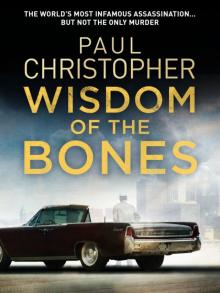 Wisdom of the Bones
Wisdom of the Bones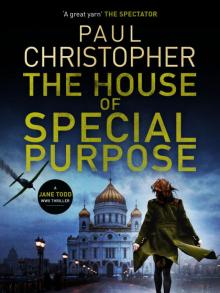 The House of Special Purpose
The House of Special Purpose The Second Assassin
The Second Assassin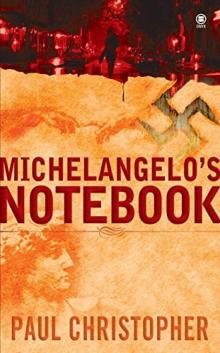 Michelangelo's Notebook
Michelangelo's Notebook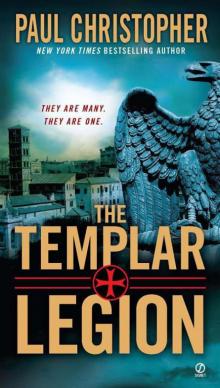 Templar Legion
Templar Legion The Sword of the Templars t-1
The Sword of the Templars t-1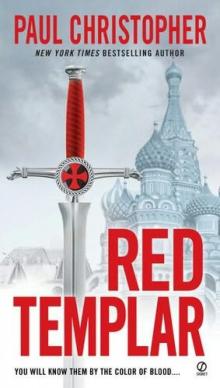 Red Templar
Red Templar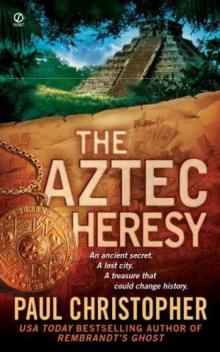 The Aztec Heresy
The Aztec Heresy The Templar Legion
The Templar Legion Rembrandt's Ghost
Rembrandt's Ghost Sword of the Templars
Sword of the Templars The Templar throne t-3
The Templar throne t-3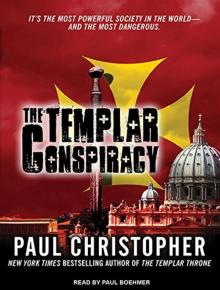 The Templar Conspiracy
The Templar Conspiracy The Templar Cross t-2
The Templar Cross t-2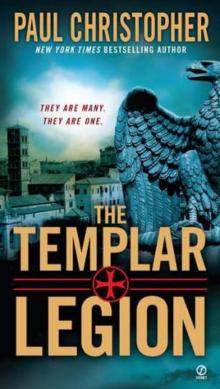 The Templar Legion t-5
The Templar Legion t-5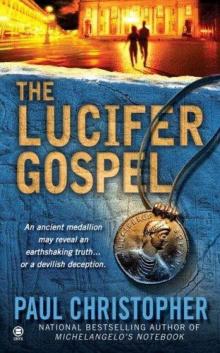 The Lucifer Gospel
The Lucifer Gospel Templar Throne
Templar Throne Michelangelo_s Notebook fr-1
Michelangelo_s Notebook fr-1 The Lucifer Gospel fr-2
The Lucifer Gospel fr-2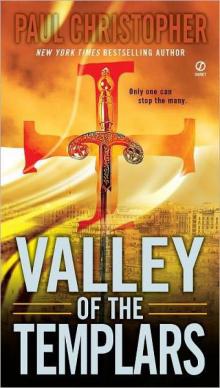 Valley of the Templars ts-7
Valley of the Templars ts-7 Valley of the Templars
Valley of the Templars Templar Cross
Templar Cross The Templar Throne
The Templar Throne The Templar Cross
The Templar Cross Lost City of the Templars
Lost City of the Templars The Templar conspiracy t-4
The Templar conspiracy t-4 Templar Conspiracy
Templar Conspiracy